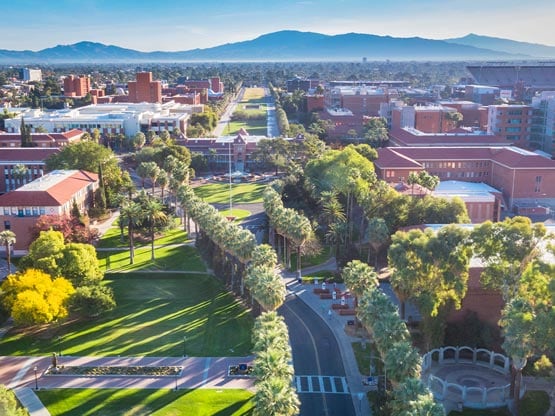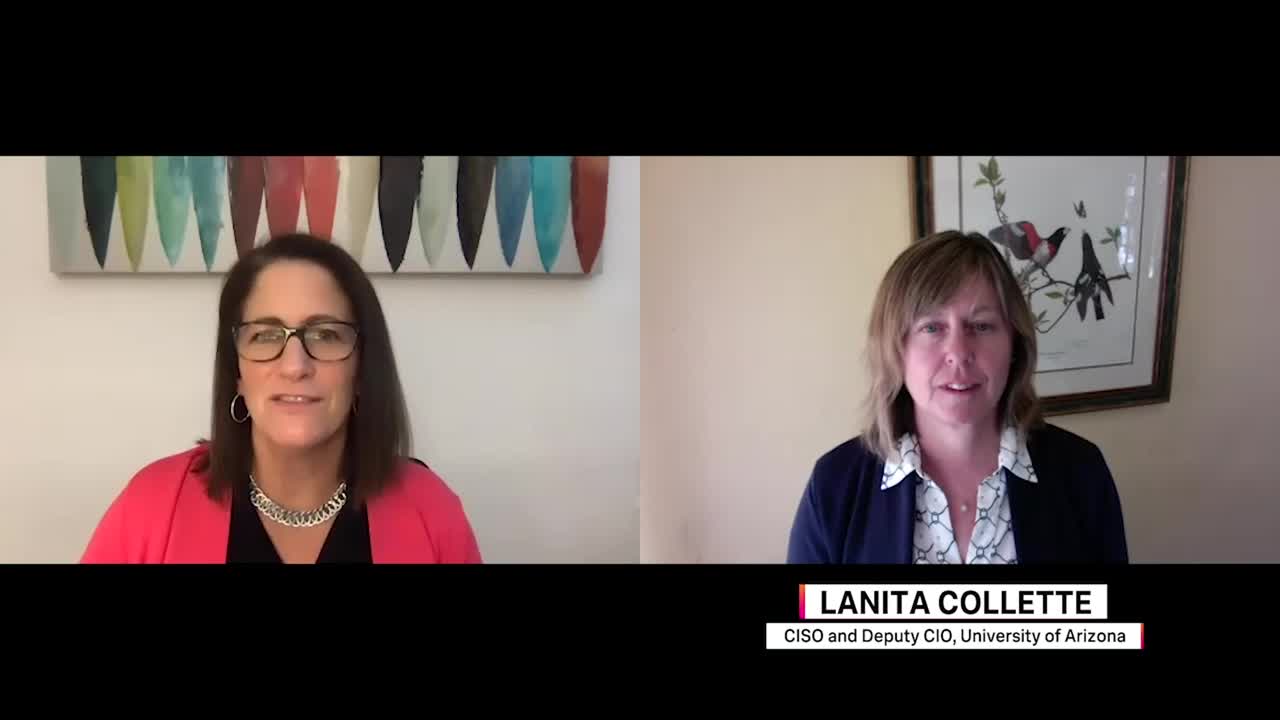Splunk has been invaluable to us. We’re able to move forward with innovative practices around using machine data that we collect, like wireless access points to inform leadership about the density in various areas of campus.
When nearly all of its 60,000 students, faculty and staff quickly moved off-campus, the University of Arizona turned to Splunk Remote Work Insights (RWI) to understand and mitigate new challenges.
With Splunk RWI, the university gained visibility into its network and insights into whether people were making use of remote-work tools, allowing the school to continue its mission even while fully remote.
In 1885, the University of Arizona made history as the first university in the Arizona Territory.
Today, the Tuscon-based school continues to blaze new trails as an institution at the forefront of data-driven research and innovation.
When the COVID-19 pandemic hit, the University of Arizona (UArizona) had to put its data-driven philosophy to the test, harnessing the power of the Splunk platform to make smart decisions and take quick action to protect all the university’s more than 60,000 students, faculty and staff.
Outcomes
- Unified data from the school’s VPN, SSO and MFA systems, wireless network usage and Zoom traffic for better security and performance
- Enabled the team to make decisions and take action based on actual data instead of assumption
- Improved efficiency and security while gaining new sources of data and insights to inform decision-making for IT, network planning and marketing
Well Prepared for Crisis
UArizona is founded on a powerful mission: “We will continuously improve how we educate and innovate so we can lead the way in developing disruptive problem-solvers capable of tackling our greatest challenges.” And when UArizona Deputy Chief Information Officer and Chief Information Security Officer Lanita Collette joined the team in 2017, she turned to the Splunk platform as a way to further the university’s inspiring mission.
“When I arrived at the University of Arizona, one of the first things I did was bring Splunk on campus to help us develop stronger information security practices,” says Collette. “I had an inkling that the Splunk platform would prove very valuable, not just for security or running our infrastructure practice better, but also for the campus and questions we would need to answer in the future.”
Fast-forward a few years to when the university needed to ask unforeseen questions around navigating a global pandemic. With the Splunk platform, UArizona was ready to spring into action — fast. In only two weeks, the university transitioned its 60,000 students, faculty and staff to a fully remote learning and working environment.
“We inadvertently were very well prepared to handle the pandemic,” says Collette. “Not only by being able to pivot quickly to remote learning but also by already having an analytics platform that allowed us to use data to make our decisions.”
Overcoming the Challenges of Remote Learning
UArizona’s remote learning environment presented a new set of challenges. The Information Security Office had no way to see service usage and determine if students were able to work effectively. And as network traffic patterns moved outside the firewall, the number of people suddenly using unsecured connections surged. To remain secure, UArizona encouraged all students, faculty and staff to use the university’s virtual private network (VPN) — which placed unprecedented strain on the university’s VPN capacity.
Splunk Remote Work Insights allowed us to more quickly pull in data and get information to leadership so they could make decisions about what to communicate and how to engage with faculty who may not have been as accustomed to remote work practices.
To ensure students continued learning and systems remained reliable, UArizona turned to Splunk RWI. “Our leadership was asking a lot of questions around how many students were accessing the learning management system and how well our resources were being consumed,” says Collette. “Splunk Remote Work Insights allowed us to more quickly pull in data and get information to leadership so they could make decisions about what to communicate and how to engage with faculty who may not have been as accustomed to remote-work practices.”
By using the Splunk platform to unify data from the school’s VPN, SSO and MFA systems, Zoom traffic and wireless network usage, UArizona regained lost insight into the student experience — while saving time for the already overloaded IT team. “Using the RWI app, it only took about five hours to swap in all of our data sources and populate all the panels,” says Paul Reeves, principal security engineer at UArizona. “If I had to do this on my own, it would’ve taken days.”
Insights Improve the Student Experience
“Leveraging the remote-work insights that Splunk provides allows us to go the extra mile to understand and improve the user experience,” says Collette. For example, by using the Splunk platform to correlate Zoom data, UArizona can identify when people are having poor Zoom performance, helping the IT team anticipate issues and improve performance for students and faculty.
With Splunk RWI, the university also discovered that not all of its students had a reliable Internet connection at home, which severely hampered some students’ ability to learn and participate. The university immediately partnered with different organizations to set up wireless networks in remote areas, helping level the playing field for learning from afar.
A Strategic Return to Campus
Whenever possible, UArizona is continuing to conduct learning remotely. But some courses, such as lab sciences and medical classes, require in-person participation. To safely bring students and staff back to campus, the university is using data to monitor foot traffic and student behavior — while prioritizing student privacy.
“Splunk has been invaluable to us. We’re able to move forward with innovative practices around using machine data that we collect, like wireless access points to inform leadership about the density in various areas of campus,” says Collette. “We’ve come up with a new practice within Splunk that anonymizes all this data before it’s given to researchers so we can protect privacy while balancing the need to keep people safe.”
As the world’s shifting landscape continues to pose new challenges, the university’s journey is far from over. Yet with its cutting- edge innovation and data-driven decision-making, UArizona is well positioned to adapt. “With the rise of IoT and the increasing importance of edge computing, there’s a ton of data being produced on location that’s being sent back in massive quantities to be analyzed,” says Collette. “Without tools like Splunk, we wouldn’t be able to move forward and be viable institutions.”










